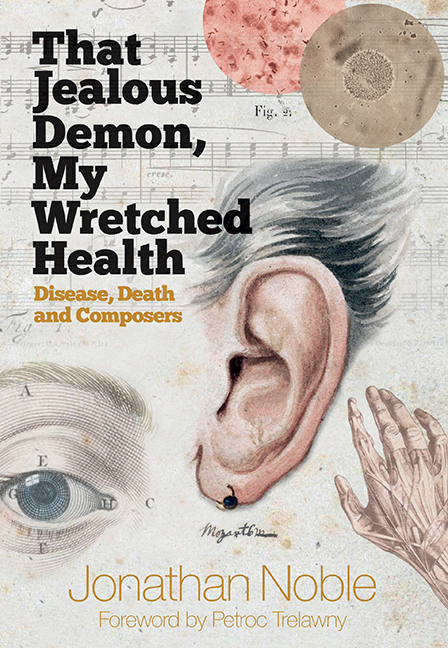Book contents
- Frontmatter
- Dedication
- Contents
- List of Illustrations
- Foreword
- Acknowledgements
- Medical Glossary
- Introduction
- 1 The Frailty of Youth
- 2 A Triumphant Old Age
- 3 Iatrogenic Afflictions
- 4 Syphilis
- 5 Alcoholism
- 6 Troubled Minds: Mental Illness and Suicide
- 7 Nerves Beyond the Edge: Other Afflictions of the Nervous System
- 8 Broken Hearts
- 9 Breathless: Respiratory Diseases
- 10 Cancer
- 11 The Ultimate Blow: Deafness
- Epilogue and Coda
- Appendix: Accidental and/or Violent Deaths
- References
- Bibliography
- Index
11 - The Ultimate Blow: Deafness
Published online by Cambridge University Press: 05 September 2018
- Frontmatter
- Dedication
- Contents
- List of Illustrations
- Foreword
- Acknowledgements
- Medical Glossary
- Introduction
- 1 The Frailty of Youth
- 2 A Triumphant Old Age
- 3 Iatrogenic Afflictions
- 4 Syphilis
- 5 Alcoholism
- 6 Troubled Minds: Mental Illness and Suicide
- 7 Nerves Beyond the Edge: Other Afflictions of the Nervous System
- 8 Broken Hearts
- 9 Breathless: Respiratory Diseases
- 10 Cancer
- 11 The Ultimate Blow: Deafness
- Epilogue and Coda
- Appendix: Accidental and/or Violent Deaths
- References
- Bibliography
- Index
Summary
Silence is argument carried on by other means
Che GuevaraIntroduction
The composer as hero is possibly epitomised by those who became deaf. It seems the supreme injustice. Many ask how musicians can compose when they cannot hear the result of their labours. Beethoven showed that they can. He said, when seriously deaf, that of all his activities composition was the easiest, and social interaction the most difficult. Martin Cooper has talked of Beethoven's ‘inner life of almost unparalleled reality and intensity, unsullied by unwelcome noise and thus distraction, whereby the process of cerebral composition may be actually enhanced’. But one wonders. Beneath one of the Cumbrian mountains is a memorial to a young man who, after amputation of a leg, scaled it on crutches. Perhaps deaf composition is like that.
Fig. 7 outlines the basic anatomy and mechanism of hearing. Sound waves enter the external meatus having been magnified by the outer ear (pinna), which acts like a megaphone in reverse. On reaching the tympanic membrane the sound waves resonate and are transmitted across the middle ear by three small bones (ossicles) known as malleus, incus and stapes. The stirrup-shaped stapes is attached to a second membrane which then transmits sound to a complex organ, the cochlea, which resembles a baby octopus. Within this marvel of creation are tiny hairs which convert sound waves into impulses, which are electrically transmitted to the hearing centres of the brain via the acoustic (or auditory) nerve, and so we behold the miracle of hearing.
Deafness is either conductive, usually due to wax in the outer ear or disease in the middle ear, or sensorineural, that is, due to disease with the cochlea and/or the acoustic nerve. Th ere are mixed patterns too. Smetana's deafness was due to syphilitic destruction of that nerve and therefore entirely sensorineural. It was typically syphilitic, with fairly sudden onset and progression to total deafness within a few months. Secondly, presbyacusis is the typical and usually inevitable cochlea sensorineural deafness of old age, which aff ected Ralph Vaughan Williams and possibly Ethel Smyth.
- Type
- Chapter
- Information
- That Jealous Demon, My Wretched HealthDisease, Death and Composers, pp. 321 - 350Publisher: Boydell & BrewerPrint publication year: 2018



